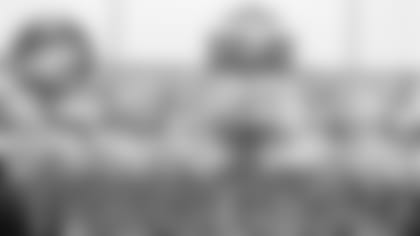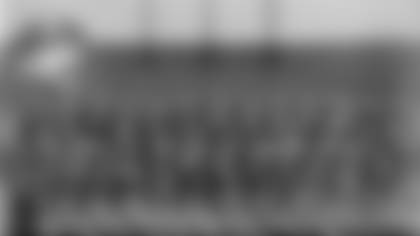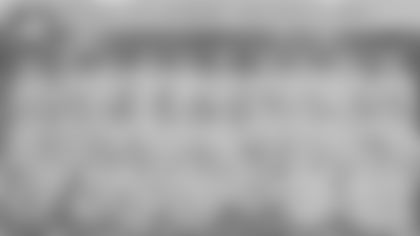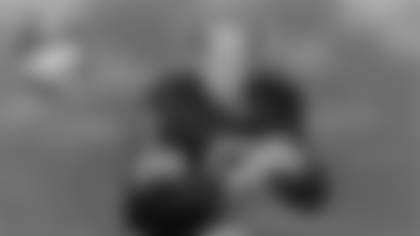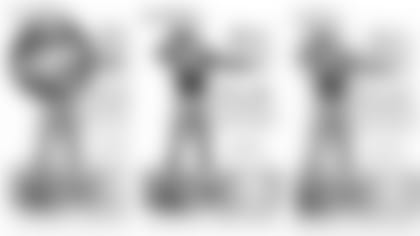Brad from Tucson, AZ
I've been spending a lot of time in my Packers media guide (my book of choice if stranded on a deserted island), and I'm astounded at the Packers' offensive futility in 1977. The Packers scored only 11 offensive touchdowns in a 14-game season. They averaged only 9.6 points per game and scored more than 16 points once all season. What the hell was going on out there?
To your point, that was a terrible offensive team. And it wasn't the only one during the 24-season, post-Lombardi famine. Ten times over that stretch, the Packers finished in the bottom five in the NFL in total offensive yards, including once under Phil Bengtson, twice under Dan Devine, five times under Bart Starr and twice under Lindy Infante.
Before getting into the specifics of your question, let me address another issue here.
You and others have perhaps read or heard quotes by Packers offensive players from the late 1970s and early 1980s, where they talked about how they had this explosive offense and were doomed by their terrible defense.
That was the case in only one season, 1983, and maybe to a lesser degree in 1980. While the offense ranked in the bottom five 10 times in total yards from 1968-91, the defense ranked in the bottom five in total yards allowed only twice.
Dave Hanner's defenses ranked higher than the offense in each of his five seasons as defensive coordinator under Starr. When Starr fired Hanner following the 1979 season, John Meyer replaced him and his defenses ranked better than the team's offense in two of his four seasons.
In his first year as coordinator, when the Packers made the transition from a 4-3 to 3-4 alignment, Meyer's defense ranked 25th and the offense, 14th. A year later, his defense climbed to ninth; the offense finished 23rd. In 1982, when the Packers made the playoffs in a strike-shortened season for the only time in Starr's nine years as coach, the defense ranked eighth and the offense 12th. Then in 1983, the Packers ranked dead last in defense at 28th and the offense finished 2nd.
Granted, the defense was pathetic that year, allowing 35 points or more in five of 16 games. But for good reason, and it mostly stemmed back to Starr's decisions as head of football operations.
Before the 1983 season, he decided not to meet defensive end Mike Butler's contract demands, and it resulted in him jumping to the United States Football League. Thus, when unsung nose tackle Terry Jones was lost for the season with an opening-day injury, the defensive line was decimated.
But that, too, was more a result of bad football decisions and not just the one involving Butler.
In the 10th round of the 1983 draft, the Packers passed on nose tackle Tim Krumrie, a Wisconsin native and decorated defensive tackle at UW, to select Indiana University basketball player Jimmy Thomas on the recommendation of Bob Knight. Krumrie was selected five picks after Thomas and resurrected Cincinnati's defense as a rookie – it jumped from 18th to first in 1983 – while Thomas never signed with the Packers.
Five years earlier, in the 1978 draft, the Packers were penalized their fourth-round pick for conducting illegal college workouts approved by Starr. Following that draft, Starr told me that he probably would have used that choice to take 6-foot-8, 275-pound defensive end Dennis Harrison, who was chosen by Philadelphia two choices after the lost Packers pick and registered 10½ sacks in 1982 and 11½ in '83.
Plus, after the Packers drafted defensive lineman Bruce Clark fourth overall in 1980, Starr didn't take his agent's threat to sign in the Canadian Football League seriously. And that's exactly what happened, the Packers lost Clark to Toronto of the CFL.
Making Meyer the scapegoat for the Packers' failure to finish over .500 from 1980-83 – other than when they went 5-3-1 in '82 – is pure hogwash. So is blaming team president Robert Parins, whose first offseason as the Packers' principal executive officer was 1982, because the Butler and Thomas-over-Krumrie decisions were made in football operations with Starr in charge.
It's a shame that players from back then have made Meyer and Parins the scapegoats, and the resulting coverup has gained traction. In truth, it's a completely revised version of history.
As for 1977, that was Lynn Dickey's second year as quarterback, and as I posted in a story about Jordan Love on Jan. 11, he had a major league arm but was at a tremendous disadvantage because Dan Devine had swapped nine top-five-round draft picks from 1974-76, and Starr had traded another for over-the-hill guard Bruce Van Dyke in '76.
Moreover, before his first season as GM and coach, Starr had traded arguably his best player, linebacker Ted Hendricks, and also one of the keys to John Brockington's unprecedented success as a 1,000-yard rusher, his sidekick at running back, MacArthur Lane.
The Packers' starting wide receivers in 1977 were Steve Odom and Ollie Smith, neither of whom caught more than 27 passes. Their running backs, Eric Torkelson and Barty Smith, were long on heart and short on speed.
When Dickey got hurt trying to score a consolation touchdown on the final play of a 24-6 loss to the Los Angeles Rams in the ninth game of the season, rookie David Whitehurst, an eighth-round draft pick, replaced him as the starter for the final five games, although it should be noted that Whitehurst twice led the Packers to victory.
On the offensive line, the starting guards were Steve Knutson, who whiffed on the block when Dickey got hurt, and second-year man Mel Jackson, who had some redeeming qualities as a pass blocker but was a 12th-round draft pick. Their backups at guard were journeyman Dennis Havig and Bob Kowalkowski, who was 34 years old and finishing his career in Green Bay after 11 seasons in Detroit.
Last but not least on the personnel front, Starr's first two drafts produced only six players who lasted more than three seasons with the Packers and only safety Steve Luke, tackle Mark Koncar and cornerback Mike McCoy became established staters.
1977 also was Starr's first year running the offense after firing offensive coordinator Paul Roach following the previous season. That, too, was a major change.
So the answer to your question – "What the hell was going on out there?" – was a severe shortage of talent as the result of a lot of bad football decisions under Devine and Starr.
Then again, there was one highlight to the '77 season: A 10-9 victory over Detroit, another sub-.500 team, in the finale at Lambeau Field. The game was played on Dec. 4, and the temperature at kickoff was 10 degrees.
The play was shoddy but what made it a memorable day were the fans storming the field and hoisting defensive tackle and fan-favorite Dave Roller on their shoulders and then proceeding to tear down the goal posts. After which, Roller famously said, "Did I smell brandy? You better believe it. I smelled Jack Daniels, too."
Derrick from Schenectady, NY
Can you expound on the high potential, yet eventual ineffective careers of Packers QBs Rich Campbell and Jim Del Gaizo?
Interesting question and a good one. But I'm going to start by shooting down your premise. I don't think either one was that talented.
In 1973, Devine traded two second-round draft picks for Del Gaizo. Eight years later, Starr drafted Campbell in the first round, sixth overall. The harsh reality is that those two mistakes on quarterbacks personified the incompetence of the organization when Devine and Starr filled the dual roles of GM and coach.
Here was Del Gaizo's background when the Packers traded for him: He was a 26-year-old southpaw who had played collegiately at the University of Tampa. He signed as an undrafted free agent with Cincinnati in 1970 and was cut 10 days into camp. A year later, Del Gaizo signed with Miami and Don Shula liked him enough to keep him on his taxi squad, or what is now basically the practice squad.
In 1972, Del Gaizo was the third-string quarterback behind Bob Griese and Earl Morrall – second-string when Griese got hurt and missed eight games – on the Dolphins' undefeated Super Bowl champions. Del Gaizo appeared in four games and threw nine passes, six of them in a 52-0 rout of New England on Nov. 12, 1972. Del Gaizo entered the game on Miami's final possession of the third quarter and threw two touchdown passes of 51 and 39 yards in the fourth quarter.
In the 1973 draft, Miami selected quarterback Don Strock of Virginia Tech in the fifth round, and Del Gaizo became expendable. Thus, Shula showcased him in the preseason, and Del Gaizo responded by leading two come-from-behind, fourth-quarter victories against Cincinnati and New Orleans.
In the Dolphins' preseason opener against the Bengals, Del Gaizo played most of the game and was 11-of-14 for 167 yards and a touchdown, including a 52-yard completion to set up the score. Against the Saints, Del Gaizo was rather ordinary, completing 3-of-8 passes for 44 yards. Then in Miami's third exhibition game, four days before the trade, Del Gaizo was 5-of-15 for 43 yards in a 9-9 tie with the Chicago Bears.
At the time of the trade, Scott Hunter was entering his third season and had started all 15 games in 1972, when the Packers compiled a 10-4 regular-season record before losing in the playoffs. The other veteran was Jerry Tagge, who had been drafted 11th overall a year earlier.
Still, the Packers were convinced they needed better, and as so often happened back then, the general manager, Devine, didn't listen to the one person in charge of evaluating players who might be available in a trade, director of pro scouting Bill Tobin.
"The Del Gaizo trade should never have been made anyway," Tobin told me in 1997. "I had seen him and didn't want him at all. But I was out on the road and came back, and we had traded for him. That was pushed by Rollie (Dotsch, offensive line coach). He was in Dan's ear: 'You gotta get a quarterback. You gotta get a quarterback.' I never said we didn't, but let's get the right one."
Del Gaizo was a non-conformist at the time with his Fu Manchu moustache and hair down to his shoulders, but physically his biggest shortcoming was his frail build at 6-foot-1 and listed weight of 198. That said, the one thing he had going for him was a strong arm, although his accuracy and decision-making looked suspect in his eight games and six starts with the Packers. His completion percentage was 43.5 and his TD-to-interception ratio was 2-to-6.
"He was a weirdo," middle linebacker Jim Carter told me in 2010. "He didn't fit in at all. I don't remember him even having any friends on the team. He could throw. That was it. I don't think he thought too clearly. Smoked a lot of dope, I think. I think he was a pretty good weed-puffer."
As for Campbell, who played at the University of California, I wrote about that draft choice at some length in our book, “The Greatest Story in Sports.”
Director of player personnel Dick Corrick all but begged Starr to draft future Pro Football Hall of Fame defensive back Ronnie Lott if he was available at No. 6, which he was. And when Starr turned in Campbell's name to draft headquarters, Packers West Coast scout Lloyd Eaton muttered to Bob Harlan in the Packers' draft room, "That's a bad choice. He can't play."
The Packers' scouts who had personally evaluated Lott had all liked him. But defensive backs coach Ross Fichtner didn't want him and quarterbacks coach Zeke Bratkowski pitched for Campbell.
"Lott was as high as you could go in our draft room because the ceiling was there," Corrick told me later. "Rich Campbell was a couple levels below that."
But Campbell was the pick, and he lasted four years in Green Bay, appearing in seven games with a stat line of 31 completions in 68 attempts with three TD passes and nine interceptions.
What went wrong?
First and foremost, Campbell lacked arm strength and it was exasperated by a high, slow delivery.
The Packers weren't the only team high on Campbell before the draft. The consensus among scouts was that he'd be an early No. 1 choice. But there was little agreement among scouts, his college and pro coaches, and his teammates about what doomed him. Some said he changed his delivery following an injury to his left shoulder in Cal's season opener his senior year, but Roger Theder, his coach at Cal, dismissed that suggestion. Teammates and Packers coaches also questioned his toughness and leadership skills.
But the bottom line, his selection was another case of organizational failure, more than anything. And Starr eventually admitted it.
"Here was a quarterback of all things," Starr, who led the Packers to five NFL titles as their quarterback during the Lombardi era, told me in 1986. "I should be able to judge a quarterback, and I knew (Campbell) couldn't play, and I allowed myself to be talked into it."
Even before the draft, Corrick told me he had doubts about Campbell. "He had a problem last year in that he couldn't get his team in the end zone," Corrick told me prior to the 1981 draft. And Corrick and Starr also both admitted that they had watched film of Campbell together before the draft and discussed concerns about his throwing motion.
Before that same draft, Corrick also spoke highly of future Pro Football Hall of Fame guard Russ Grimm and told me he was hoping the Packers could steal him down the line. But before draft day, Corrick admitted later that he gave up the fight because others in the organization weren't as impressed with Grimm and jumped on board with taking punter Ray Stachowicz in the third round instead. Washington drafted Grimm seven picks after the Packers took Stachowicz.
Tom from MacHesney, IL
I love your articles about Packers history! Thank you very much! I would like to ask you about your thoughts on former Packers 1976 first-round pick Mark Koncar. He was selected to the All-Rookie Team by the PFWA. I remember him as a talented player whose career was curtailed by injuries. I seem to recall hearing he may have had some difficulties with head coach Bart Starr. Your thoughts?
You remember him correctly. Drafted with the 23rd overall pick, obtained from Oakland in the Hendricks deal, Koncar made the Pro Football Writers of America All-Rookie Team in 1976 and appeared to have a bright future.
"He's the best-looking young linemen I've seen come into the league since I've been in it," Gale Gillingham, perennial all-pro guard who came out of retirement to play a 10th and final season in Koncar's rookie year, said at the time. Tight end Rich McGeorge, then a seven-year veteran, said, "That Mark Koncar is super. He'll be an all-pro in three years, maybe two."
But after starting 27 of 28 games during his first two seasons, Koncar injured his left knee in the preseason opener in 1978, underwent surgery for torn cartilage with the expectation that he might be out for a month and wound up with a staph infection that sidelined him for the season. "That was pure carelessness by the Packers," Koncar's agent Steve Ehrhardt told me in 1981 at a time when Packers players were losing confidence in the team's medical staff because of some botched surgeries.
Koncar never really regained his health. In 1979, he missed four games and was sub-par for most of the other 12 because of an ankle injury. In 1980, he played in only one game due to an ankle injury and then a torn Achilles tendon that he suffered in practice. In 1981, he started 12 games but, again, still had issues with his Achilles.
That also was the year when Koncar walked out of an offensive line meeting where he was sharply criticized by Starr and missed a game in mid-October. Nobody ever reported what exactly was said in the meeting, but I wrote in a copyright story at the time that Starr faced a near mutiny by his entire line. That it had met as a group and discussed walking out en masse in support of Koncar.
"All we know is that some players believe it went beyond a normal chewing-out," I wrote following the incident. "Some have said it was a challenge to Koncar's manhood. One described it as extremely embarrassing. Another said it was humiliating."
The following July, Koncar was traded to the Houston Oilers for what turned out to be a 10th-round draft pick. Starr admitted his walkout was a factor in the trade. Koncar appeared in five games for the Oilers and announced his retirement in July 1983.
In summary, a young Koncar and Chad Clifton kind of reminded me of each other as far as their size, their temperament and their play, especially their similarly sound pass protection techniques. Koncar was 6-5, 270-plus and maybe a little more physical than Clifton in the run game.



